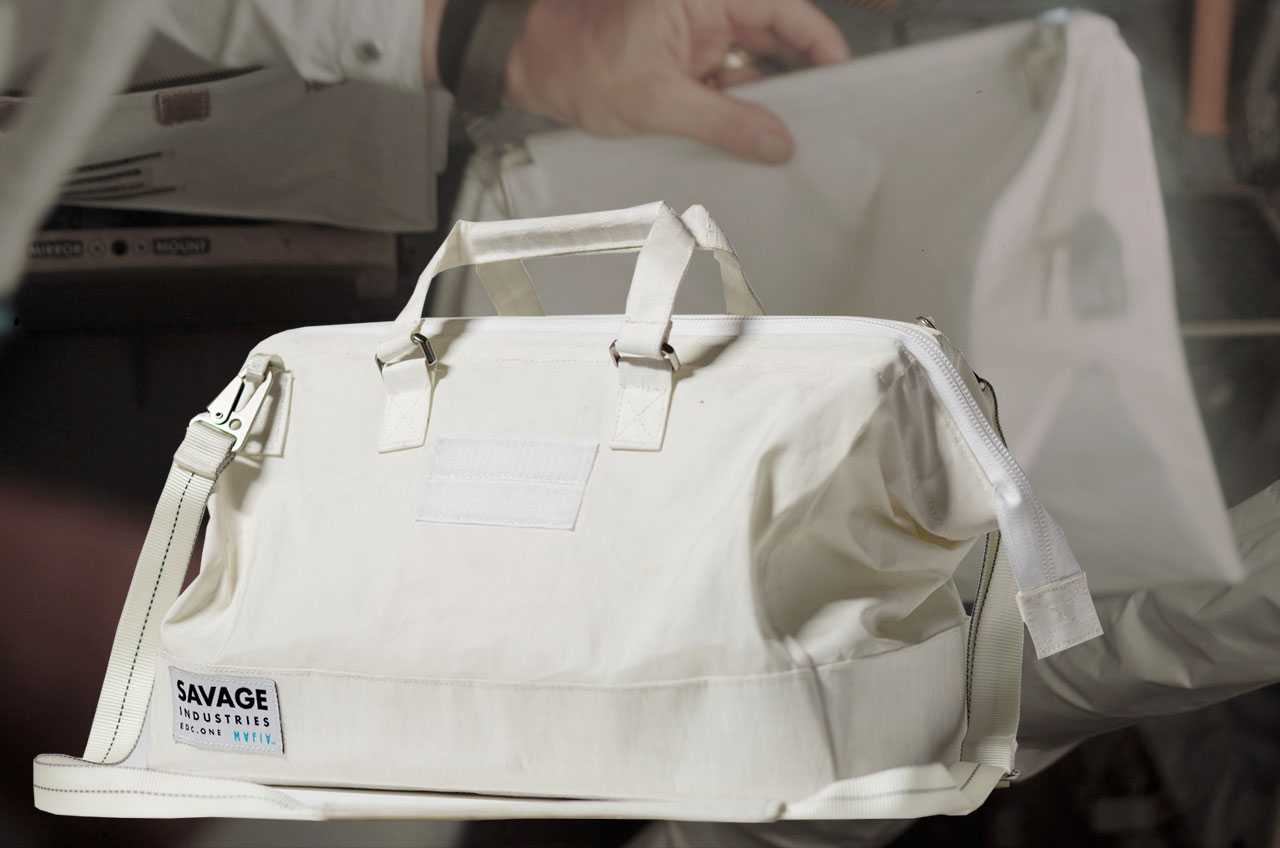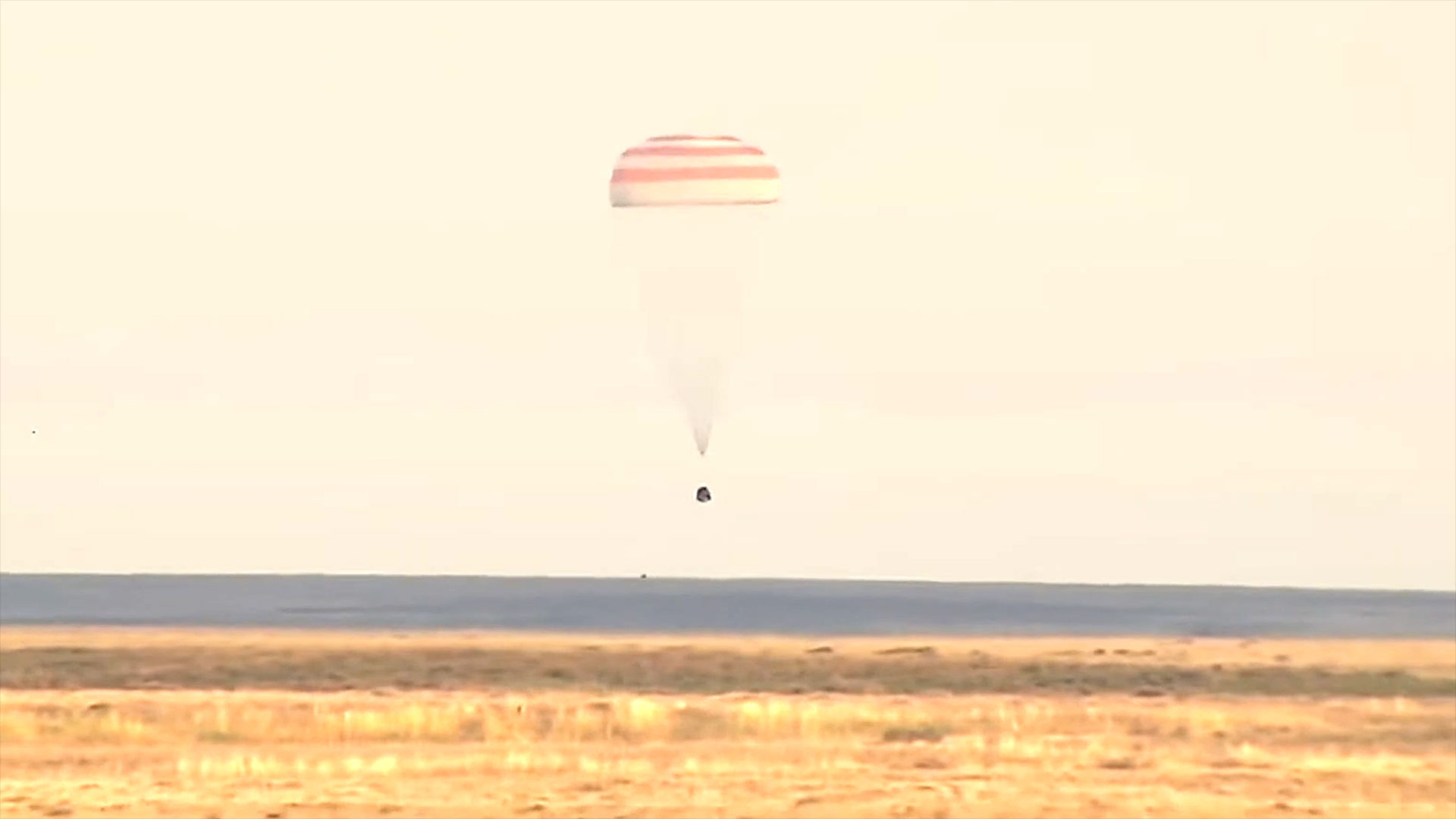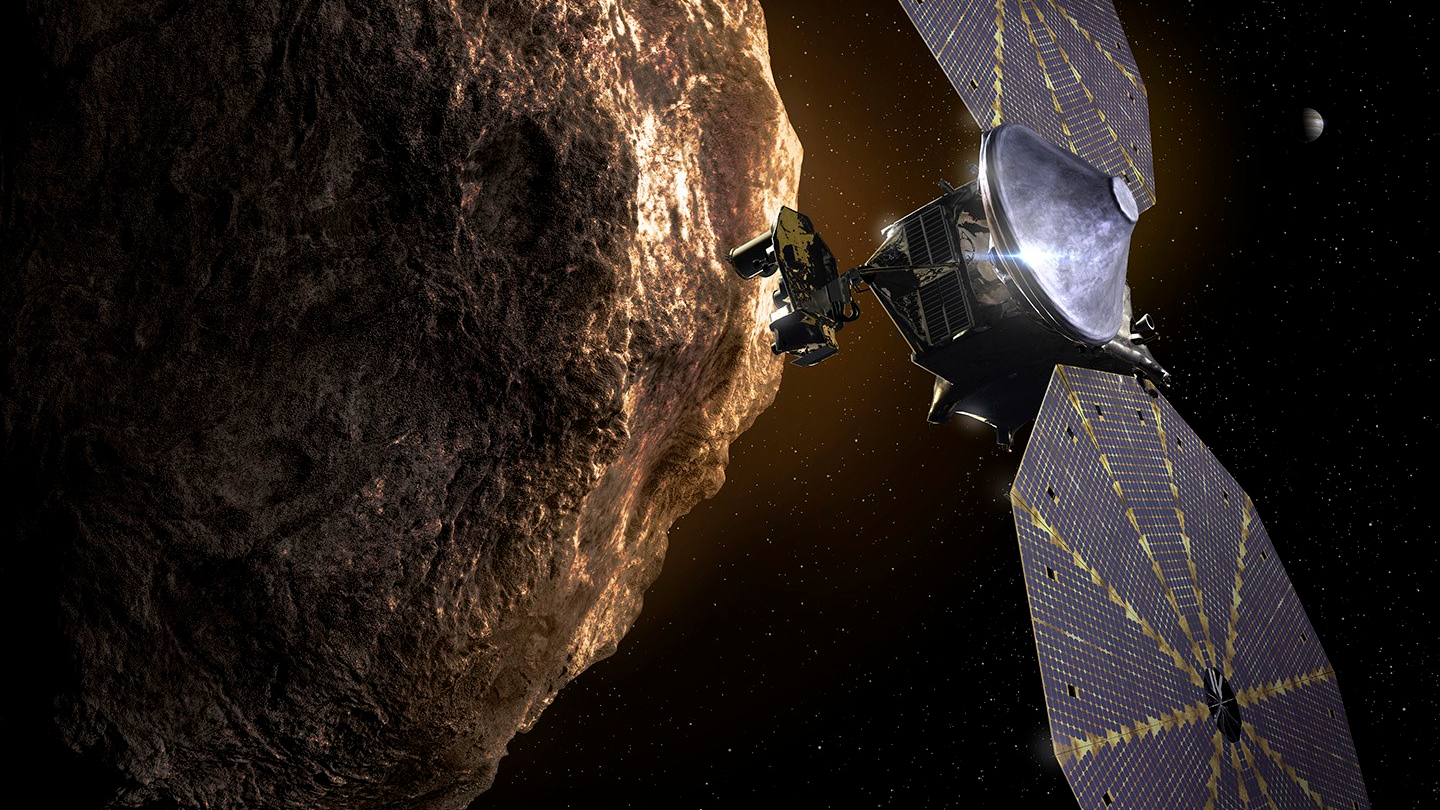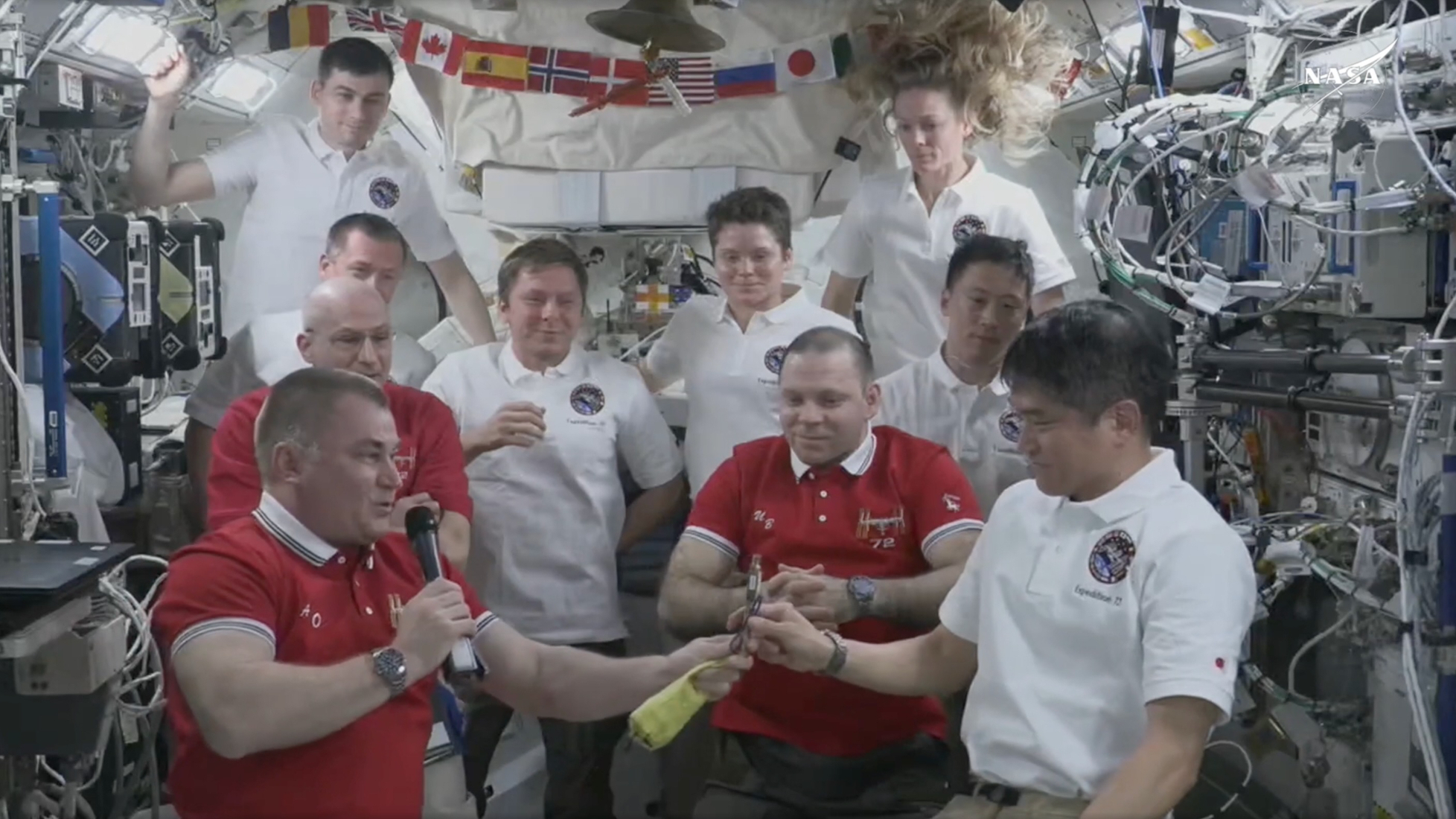Adam Savage's New Tool Bag Styled After Apollo Astronaut 'Purse'

Adam Savage is over the moon about his new creation, which is appropriate given its pedigree.
The former "Mythbusters" co-host and Tested.com editor-in-chief, Savage recently introduced his first original product, a tool bag dubbed the "EDC One." The every day carry (hence EDC) evolved from Savage's decades-long pursuit of a durable, yet simple and stylish bag to hold his stuff.
"The origins of the EDC One go all the way back to my tool kits I used as a model maker in the '90s, up to working at Industrial Light & Magic and on Warner Bros. films, through the beginning of 'Mythbusters,'" said Savage. "My tool boxes started out as leather doctor bags of roughly a similar size and shape to the EDC One."
Savage's leather bags eventually gave way to kits he built out of aluminum. But for the EDC One, he looked to a different type of hardware. [NASA's 17 Apollo Missions in Pictures]
"I've spent the last 15 years being totally obsessed with NASA hardware," he said in an interview with collectSPACE.com.
Out of a moonwalker's closet
"It started out with the spacesuits, but now I have subfolders of reference material for the tools from the Apollo missions and the space shuttle missions," described Savage. "I have booties and baggies and all the little bits of ephemera that NASA produced to support the astronauts."
"I find it endlessly riveting, the idea of the ingenuity and problem solving that goes into each," he said.
Get the Space.com Newsletter
Breaking space news, the latest updates on rocket launches, skywatching events and more!
To that end, Savage took particular notice when a flown-to-the-moon bag packed with tools was discovered in the back of Neil Armstrong's closet after the Apollo 11 astronaut died in 2012. The stowage bag, referred to as the "McDivitt purse," after Apollo 9 astronaut Jim McDivitt, whose idea it was to include it on board the Apollo spacecraft, was small, white and featured a clamshell opening.
Armstrong, apparently, took the bag home after the first moon landing mission and then forgot that he had it. In 2015, the Smithsonian announced it was being loaned to the National Air and Space Museum in Washington, DC.
"When the Armstrong McDivitt purse came out, that was completely an obsession for me," said Savage. "I loved the form factor of it."
At just about the same time, Savage was introduced to Marco Mafia, a designer of bags and backpacks made from retired sails from boats.
"His shop was not far from my shop, so we would have lunch and he'd come over, and I'd have ideas for sizes of bags and he'd make a few prototypes for me and I'd play around with them," recalled Savage. "I showed him the Neil Armstrong purse and a drawing of the size I thought it should be and what I was thinking.
Six months later, Mafia returned to the shop with a prototype for the EDC One.

NASA-adjacent
"As soon as he and I saw it, we were both like, 'That's it. This is totally the thing.'"
The EDC One was inspired by, but is not a replica of the McDivitt purse. For one, it is larger (about an inch [2.5 cm] shorter, but about three inches [8 cm] longer).
"It wasn't quite as big as what I wanted," Savage said about the Apollo artifact.
The McDivitt purse was made out of a woven glass fiber fabric called Beta cloth — the same material used to line the outside of Apollo and later spacesuits. The EDC One is fabricated from up-cycled and salvaged sailcloth.
"It's a lot stiffer than Beta cloth," Savage said. "There are many different kinds and grades of Beta cloth that NASA has used. Spacesuits, if anything, are shockingly more supple than you think they ought to be given their multiple layers."
"The sailcloth is quite robust. In fact, on one of the prototypes [for the EDC One], I wanted to put a rivet through part of the bag and I had trouble driving an icepick through the sailcloth in order to get it in."
Both bags feature a clamshell-style opening. The EDC One is held open by a wide spring steel frame, while the McDivitt purse used a metal hinge. (As a side project, Savage had the hinge modeled in 3D, "because I want make a replica.") [Apollo Quiz: Test Your Moon Shot Smarts!]
The EDC One also differs in that it has handles and a strap. The clasp holding the strap to the bag is what Savage describes as "NASA adjacent."
"It's about as close as we can get right now," he said. "But I like the clasp because it does feel a little space hardware-like and its finish matches the D-rings that hold the handles onto the EDC One."
"The clasp is not quite NASA because most of NASA's stuff is finished as sort of a matte bead-blasted aluminum look, and it has a slightly higher shine than that. But I like that it is NASA-adjacent, as it were."
EDC One (and counting)
The EDC One, which is available from Savage Industries for $225, has one other "NASA adjacent" feature — hook and loop fasteners (or as more commonly known by the brand name, Velcro). It is both inside the bag for future functionality and on the outside "for identification."
"I am in the process of producing some patches that we'll sell on the website that I have had a wonderful young San Francisco designer work up," Savage explained. "You can go and have a patch made to fit, but I am having made six patches that are sort of generic icons of what you might use the bag for."
"If you are going to use it carry around your sketch books, if you're going to use it to move around your camera equipment, or you going to use it for writing, or use it for painting, there's a patch for each one that you can put on there for that."
Savage envisions the "mission" patches being used interchangeably on EDC One and future EDC-line products, the latter to also take cues from space history.
"They will draw from other space artifacts," said Savage. "I have a lot of reference material from other Apollo bits of hardware, or I guess software – Apollo cloth stuff – that I really like and I think might be great.”
See more photos of Adam Savage's Apollo-inspired EDC One tool bag at collectSPACE.
Follow collectSPACE.com on Facebook and on Twitter at @collectSPACE. Copyright 2017 collectSPACE.com. All rights reserved.
Join our Space Forums to keep talking space on the latest missions, night sky and more! And if you have a news tip, correction or comment, let us know at: community@space.com.

Robert Pearlman is a space historian, journalist and the founder and editor of collectSPACE.com, a daily news publication and community devoted to space history with a particular focus on how and where space exploration intersects with pop culture. Pearlman is also a contributing writer for Space.com and co-author of "Space Stations: The Art, Science, and Reality of Working in Space” published by Smithsonian Books in 2018.In 2009, he was inducted into the U.S. Space Camp Hall of Fame in Huntsville, Alabama. In 2021, he was honored by the American Astronautical Society with the Ordway Award for Sustained Excellence in Spaceflight History. In 2023, the National Space Club Florida Committee recognized Pearlman with the Kolcum News and Communications Award for excellence in telling the space story along the Space Coast and throughout the world.










